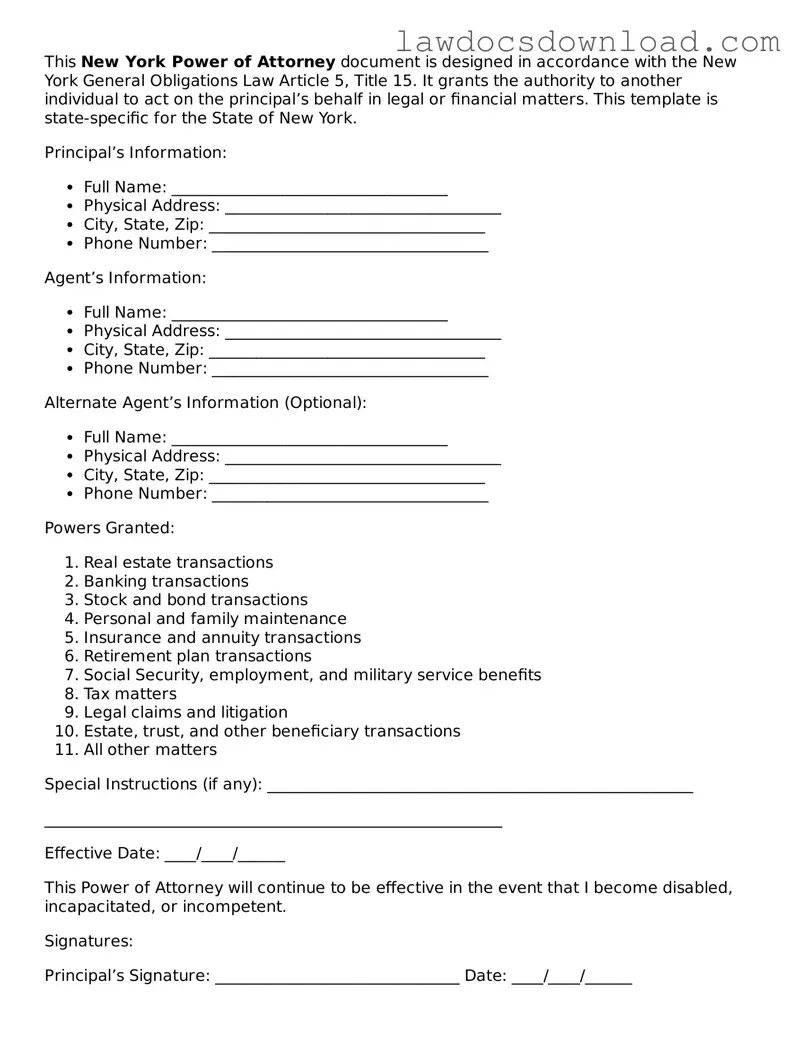The New York Power of Attorney (POA) form is just one vital legal document used by individuals to grant others the right to act on their behalf. This capability mirrors that of a Living Will, which specifies a person's wishes regarding medical treatment in the event they can't communicate these desires themselves. Both documents empower someone else to make critical decisions, yet a Living Will strictly covers health care decisions, while a POA can apply to various areas like finance, property, or legal matters.
Similarly, a Health Care Proxy is another document akin to the New York POA, focusing specifically on health care decisions. It allows an individual to appoint a trusted person to make medical decisions for them if they're incapacitated. The key similarity lies in the designation of another person to make decisions on one’s behalf, illustrating how both aim to prepare for situations where someone cannot make decisions for themselves.
The Durable Power of Attorney is a variant closely related to the standard New York POA, with the primary difference being its enduring nature upon the principal’s incapacitation. While a regular POA might cease to be effective if the person who made it loses mental capacity, the durable version remains in effect, ensuring that the agent can still manage the designated affairs despite the principal's incapacitation.
A Financial Power of Attorney shares similarities with the New York POA, as it specifically grants someone the authority to handle another’s financial matters. This can include paying bills, managing investments, or buying and selling property. Although it focuses on financial decisions, like the broader POA, it operates under the same fundamental principle of appointing another to act in one’s stead.
General vs. Specific (Limited) Power of Attorney forms also parallel the New York POA, differing mainly in scope. A general POA grants broad powers across various aspects of one’s life and affairs, while a limited or specific POA narrows this authority to particular actions or decisions, such as selling a property. Both types serve to delegate decision-making, differing only in the breadth of authority granted.
The Advanced Health Care Directive, like the New York POA, is a forward-thinking document allowing people to outline their preferences for future medical care and appoint decision-makers. While it encompasses aspects similar to a Health Care Proxy by appointing someone to make health care decisions, it also allows for specific instructions regarding medical treatment, blending elements of both a POA and a Living Will.
A Guardianship or Conservatorship arrangement bears resemblance to the POA in that it involves granting someone the authority to make decisions on behalf of another person. The key difference usually involves the legal process, as guardianships or conservatorships are court-appointed, often in cases where an individual hasn’t designated anyone to manage their affairs and they are no longer capable of doing so themselves.
Last but not least, a Trust Agreement can share some functional similarities with a New York Power of Attorney, particularly when it involves managing one’s assets. In a trust, the trustee manages assets on behalf of a beneficiary, which, like a POA, involves entrusting someone else with one’s property or financial matters. However, trusts are generally used for estate planning purposes, indicating a more long-term management and succession planning strategy.
